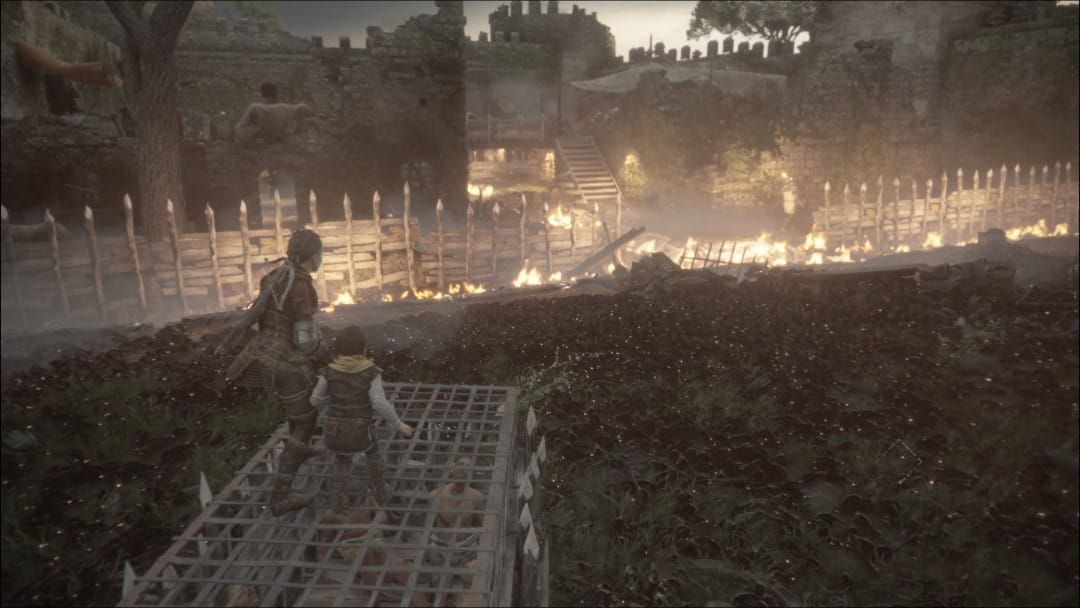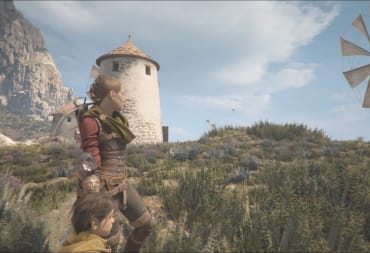A Plague Tale: Requiem manages to improve upon its predecessor in almost every fashion. Asobo Studios take full advantage of next-gen hardware to polish and refine its horror action, as well as further explore the dynamics of its main characters. But that very ambition does lead to some lurches in tone and gameplay, which can lead to an uneven overall experience.

A Plague Tale: Requiem takes place sometime after the events of the first game. Amicia De Rune and her little brother, Hugo, are desperately searching for shelter after the rat plague has completely devastated Guyenne. Furthermore, they are seeking a cure for the Macula, a fantastical affliction that seems to attract the plague toward Hugo and threatens to overtake his body and mind completely. But finding the cure is easier said than done since the secrets of the Macula are tied to ancient conspiracies and a mysterious island that keeps appearing in Hugo's dreams.
Much like the first game, the character dynamics in A Plague Tale: Requiem is top-notch. The story doesn't shy away from showing the emotional toll of the main cast. The world that they live in is harsh and unforgiving, and the voice actors do not miss a beat. But the story manages to remain hopeful and optimistic by letting the characters relax and enjoy small but impactful respites. Amicia in particular can threaten to kill people for endangering her brother, but then play pretend with her brother at a pond moments later. It is those small sparks of humanity that help make Amicia and Hugo's central relationship evolve and mature as the story unfolds.
As for the story itself, it is undeniably larger in scope. The first game was a claustrophobic miserable experience that mostly stuck to the French countryside with two major forces: an unstoppable swarm of plague rats and the Inquisition. Meanwhile, A Plague Tale: Requiem expands its scope and scale. You visit several cities as well as gorgeous island vistas, large mountainous caverns, and wide open plains. It also attempts to blend major historical events with its own conspiratorial elements like secret societies as well as elevating the Macula from an inscrutable infection to something far more dangerous.

And it is an approach I am completely torn on. While introducing new venues and locations does lead to some gorgeous setpieces, both beautiful and horrendous in equal measure, it can lead to some inconsistent pacing and jarring jumps. There's a chapter early on where you explore a city to look for a major character. The story states you need to escort him back to another location. The level escalates to where rats attack, leading to destroyed buildings, several chase sequences, as well as a string of stealth sections. But once you reach this key character, the game just cuts to you returning with the character in tow without so much as a handwave. These story hitches are few and far between but are confusing nonetheless.
As for A Plague Tale: Requiem's worldbuilding it really pushed my suspension of disbelief. While there are some great elements introduced, helped in no small part by new supporting characters like disgraced knight Arnaud and smuggler Sophia, there were sections that were lifted wholesale from Resident Evil. The strong cast of characters does help sell these plot revelations, but it can break the immersion if you linger on some of those beats for too long.

As for the core gameplay of A Plague Tale: Requiem, Asobo has done an admirable job refining everything. You will still be spending most of your time sneaking past armed guards, crafting alchemical components, using your sling to interact with the environment, and manipulating light sources to get past deadly rat swarms. The crafting system has been heavily streamlined. Amicia has unlimited rocks for her sling, and crafting materials are relegated to common pieces and rare tools.
As for what is new, Amicia does have more offensive options. In addition to a stealth takedown, Amicia can combine different alchemical components with items for makeshift weapons. These include mixing Ignifer with pots to make improvised firebombs, throwing oily tar on open flames to create medieval flashbangs, and there are knives you can use to escape from an attacker that got the jump on you.
All of these approaches are tied to a new progression system. Depending on how you complete each section of the game: sneaking past enemies, crafting alchemist's tools, or just taking enemies out, you will fill one of four progression bars. Once these bars hit certain thresholds, you'll unlock new passive bonuses like moving faster while sneaking or making alchemical components faster.
The enemy AI has also grown more sophisticated. Patrols will spread out and actively search if characters aren't at their post. Extinguishing light sources will lead to them checking the nearby area. There was even a moment in the game's second half when a guard caught me running into tall grass, and they proceeded to firebomb the field to flush me out.
But while the stealth has improved in A Plague Tale: Requiem, it also tries to make direct combat more of a focus. On paper, smaller encounters do have a certain puzzle-like quality to them. Use the sling on non-helmeted targets, stun armored knights with smoke then dismantle armor from behind, etc. But in practice, it leads to some of the most drawn-out slogs in the game. The absolute lowest point for me was about halfway through the game where I had to escort a knight through the level. You can command the knight to attack a guard, but the noise would attract more enemies. The problem is the knight automatically attacks if you are spotted while trying to sneak around, and you cannot give the knight commands to stop or regroup. To make matters worse, you automatically failed if the knight was captured. I was screaming at my screen for about an hour.

The story is also peppered with mandatory combat arenas. The worst of these is when you are fighting waves of knights. These fights quickly turn into annoying stretches of trial and error with me kiting enemies like mad searching for the materials to take them out. A close second is scripted turret sequences where you man a ballista or crossbow and have to take out enemies from afar. These are perfectly serviceable setpieces that break up the gameplay, but they can feel incongruous with a story about the toll of bloodshed and the mental toll of combat.
However, when A Plague Tale: Requiem leans on its strengths, it leads to some truly nail-biting experiences. There are several impressive disaster sequences sprinkled throughout the game's seventeen chapters where a single wrong move can mean death. Every single time rats showed up, I felt both excited and terrified. Finally, there is an extended boss battle near the end that had me on the edge of my seat. There is a lot to love here, but you will have to slog through some low points to see them for yourself.

A Plague Tale: Requiem Review | Verdict
While the story can feel uneven and the level design can get unfocused, I still recommend A Plague Tale: Requiem. Amicia and Hugo's journey is packed with some powerful character moments that are more than worth some gameplay hiccups. Just be prepared for some divisive story beats and some out-of-place combat sections.
TechRaptor reviewed A Plague Tale: Requiem on PlayStation 5 with a copy provided by the publisher. The game is also available on Xbox Series X|S and PC
Review Summary
Pros
- Nervewracking Stealth Action Gameplay
- Fantastic Main Character Dynamics
- Scary Rat Swarm Setpieces
Cons
- Uneven Story Pacing
- Annoying, Drawn Out Combat Arenas
Have a tip, or want to point out something we missed? Leave a Comment or e-mail us at tips@techraptor.net










